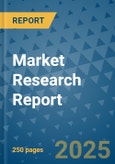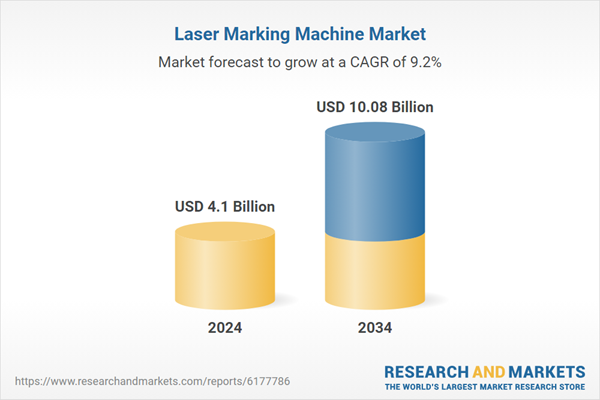The growth is driven by the combined impact of rapid technological advancements, evolving industrial demands, and rising domestic manufacturing. One of the main factors fueling this expansion is the growing requirement for traceability and compliance across highly regulated sectors such as electronics, aerospace, pharmaceuticals, medical equipment, and automotive. Traditional ink-based methods or adhesive labels do not meet today’s durability and legibility standards, which are increasingly enforced through regulatory frameworks. Laser marking, on the other hand, offers permanent, accurate, and tamper-proof marking essential for safety, quality assurance, and anti-counterfeiting. The transition toward smart manufacturing and automation has further accelerated demand. Fiber laser technologies have emerged as the dominant choice due to their high-speed marking, low maintenance, and compatibility with a wide range of materials. Regionally, Asia-Pacific continues to lead market growth, supported by its large-scale industrial base, policy-driven manufacturing upgrades, and expanding demand in consumer electronics and automotive sectors.
The fiber lasers segment generated USD 1.51 billion in 2024 and is forecast to grow at a CAGR of 10.1% from 2025 to 2034. Their widespread adoption is tied to their operational efficiency, superior beam quality, and the ability to work with multiple substrates. With higher power density and faster processing speeds, fiber laser systems outperform both CO2 and traditional solid-state variants. These characteristics make them particularly suitable for commercial applications involving metals like copper, aluminum, and stainless steel, which require precision, speed, and durability in marking outcomes.
The metals segment accounted for a 48.1% share in 2024 and is projected to grow at a CAGR of 8.5% through 2034. The increasing use of metals across industries, combined with strict traceability standards, has made laser marking a preferred method for identification and quality control. Markings on metals deliver exceptional longevity and resistance to heat, abrasion, and chemicals, making them ideal for high-demand applications. Fiber lasers’ strong absorption rate for metals allows for fast, clean, and precise marking with minimal impact on surrounding surfaces, offering both performance and cost-effectiveness.
U.S. Laser Marking Machine Market held an 82.4% share and generated USD 833.6 million in 2024. The country's dominance stems from its advanced industrial ecosystem spanning sectors like medical devices, aerospace, defense, electronics, and automotive. These industries rely heavily on permanent marking systems to meet legal traceability standards and compliance requirements. Advanced laser systems, including UV and ultrafast models, are widely integrated into automated production lines across the region. Regulations around device identification and part labeling have played a central role in driving laser marking machine adoption.
Companies shaping the Global Laser Marking Machine Market include Lumentum Operations, LaserStar Technologies, FOBA Technology and Services, Keyence, Coherent, Han's Yueming Laser Group, Gravotech Marking, Laser Photonics, Epilog Laser, IPG Photonics, Huagong Tech, Novanta, Danaher, Daheng New Epoch Technology, and Han's Laser Technology Industry Group. These major industry players are deeply invested in R&D, automation, and performance-driven system development to cater to next-generation marking requirements. Leading companies in the laser marking machine market are strengthening their position through sustained investments in R&D to develop high-speed, high-precision systems with minimal maintenance needs. They are focusing on innovations in fiber, UV, and ultrafast laser technologies to meet the specific demands of sectors like electronics, aerospace, and medical devices. Strategic acquisitions and global expansion are being pursued to enhance market penetration and diversify product portfolios. Manufacturers are also integrating their systems with smart factory technologies and automation platforms to offer turnkey solutions.
Comprehensive Market Analysis and Forecast
- Industry trends, key growth drivers, challenges, future opportunities, and regulatory landscape
- Competitive landscape with Porter’s Five Forces and PESTEL analysis
- Market size, segmentation, and regional forecasts
- In-depth company profiles, business strategies, financial insights, and SWOT analysis
This product will be delivered within 2-4 business days.
Table of Contents
Companies Mentioned
The companies profiled in this Laser Marking Machine market report include:- Coherent
- Daheng New Epoch Technology
- Danaher
- Epilog Laser
- FOBA Technology and Services
- Gravotech Marking
- Han's Laser Technology Industry Group
- Han's Yueming Laser Group
- Huagong Tech
- IPG Photonics
- Keyence
- Laser Photonics
- LaserStar Technologies
- Lumentum Operations
- Novanta
Table Information
| Report Attribute | Details |
|---|---|
| No. of Pages | 250 |
| Published | September 2025 |
| Forecast Period | 2024 - 2034 |
| Estimated Market Value ( USD | $ 4.1 Billion |
| Forecasted Market Value ( USD | $ 10.08 Billion |
| Compound Annual Growth Rate | 9.2% |
| Regions Covered | Global |
| No. of Companies Mentioned | 16 |









